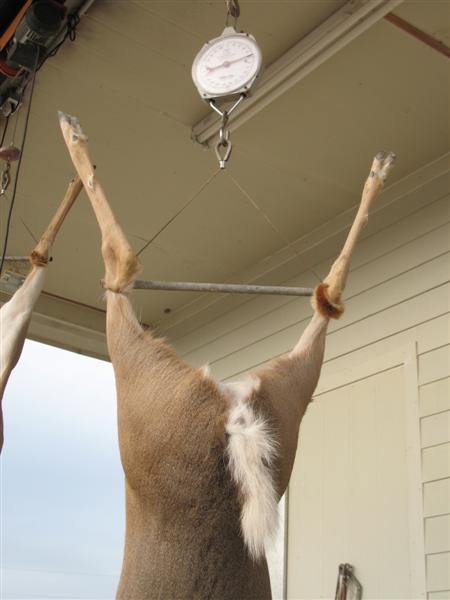
Harvest Data: Why Is It Needed?

Harvest data collection is a real necessity of any deer management program. It tells you about the current and past health history of your herd. It helps establish trends in antler and body production. It gives you averages and percentages. It allows you to separate out portions of your deer herd for closer scrutiny and evaluation. It takes out the emotion of the hunt and the eye appeal of the antlers. It is black and white and it is objective.
What type of harvest data should be collected? The more detailed data you collect, the more you can do with it. Simply put, the popular Managed Lands Deer Permit holders are required to gather age, field dressed body weight, and basic antler measurements. Others desiring more detailed information might gather age, live and field dressed body weights, gross Boone and Crockett score, lactation rates in females and photographing each buck.
Sex: This is obvious, but creating subcategories for the bucks will prove beneficial for better evaluation. Differentiate between bucks which are selected for their antler characteristics, such as spike, cull/management, or trophy class. Designate a letter such as “S” for spike, “M” for management, and “T” for trophy. This will help to further evaluate each subcategory of bucks produced. Buck fawns accidentally harvested should be recorded as bucks and not does.
Age: Properly aging a deer is very important. The tooth wear and replacement method is not a sure thing, but it is the best method currently available for field use. This data set will help to establish age-specific trends and correlations that can prove very valuable when combined with the antler measurements. If you are unsure of how to age a jawbone, extract and label it and put it in the freezer until someone with more experience can view it or consider sending it to www.DeerAge.com for evaluation. If taken to a taxidermist for mounting, request the jawbone is returned to you. Collecting other data without recording the age is useless, so accurate age determination is very important and should be mandatory on every animal harvested. Jawbones collected from a ranch can eventually be accumulated to build a reference collection.
Field dressed body weight: This is one of the most common measurements of individual deer health. Weight is taken immediately after field dressing and measurements should be taken to the nearest pound. The old cotton scales in the barn are usually not accurate enough, so invest in a good set of scales that can measure more precisely. Leave the head, hide, and lower legs on the carcass when weighing.
Antler measurements: Antler quality is the objective of most management programs, so every buck harvested, even the spikes, should be recorded. All TPWD permits require basic measurements of main beam length, inside spread, and basal circumference as a minimum standard. For optimum data evaluation however, complete Boone and Crockett score is recommended. Gross scores, before any deductions, are preferred. Photographing every buck with a profile and front view will also prove very valuable over time.
Lactation Rate: This data can be used to confirm the current year’s fawn survival estimate. If your survey method indicated one survival rate and your lactation rate indicated another, the lactation rate is the more accurate of the two. Lactation rate data is usually good only for the first half of the general deer season, so pick Thanksgiving weekend in Central Texas and December 1 in South Texas to cease such data collection. Fawn survival estimates are critical to any deer management program because it represents the “interest” of the deer herd. In order to establish a harvest recommendation, a manager must know what is being added to the population before knowing how many to harvest from the population. Without a buck fawn being produced one year, you certainly can’t harvest him as a trophy five or six years later. Fawn survival rates are critical to monitor each and every year so that harvest recommendations may be adjusted in order to reach your goals and objectives.
Harvest data collection is one of, if not the, most important management tool of an intensive deer management program. Trends and averages can be determined and problems can be detected that otherwise may not be obvious. Harvest data collection is quick, easy, and necessary for a successful program.
All photo and content herein is copyrighted property of Spring Creek Outdoors, LLC and may not be copied/reproduced or otherwise used in any way without express written permission from Spring Creek Outdoors, LLC. All rights reserved.
Posted in: Deer Management
